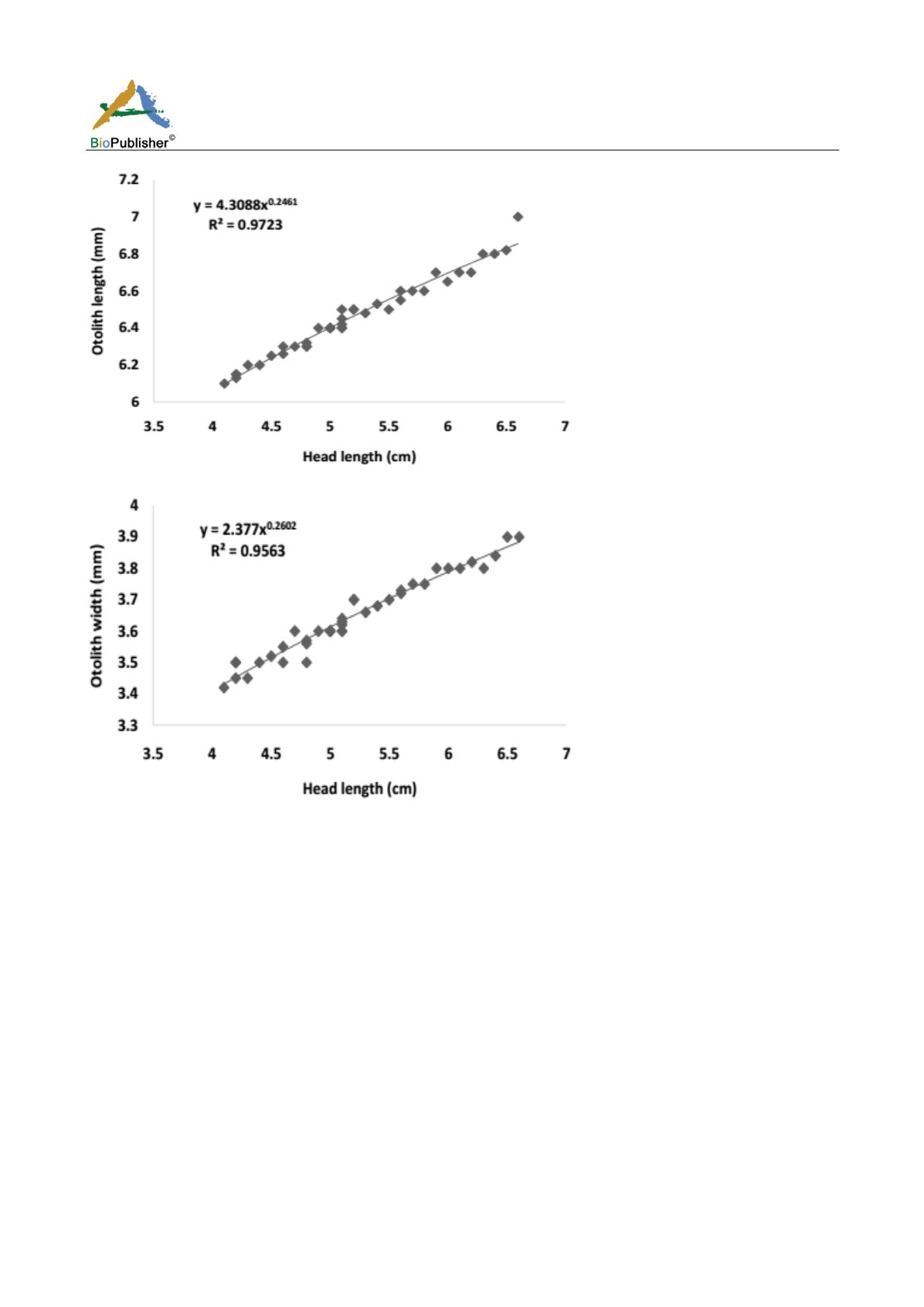
International Journal of Marine Science 2017, Vol.7, No.40, 386-393
390
Figure 6 The relationship between otolith length and fish head length
Figure 7 The relationship between otolith length and fish head length
3 Discussion
In addition to the morphology of the otolith, the relationships between fish sizes and otolith sizes are useful means
in distinction of species, stock and population. Such relationships can be exploited to valuate fish size and
biomass in food and feeding studies (Granadeiro and Silva, 2000; Campana and Thorrold, 2001; Campana, 2005;
Hussy et al., 2012). Studies on these features of fishes from Omani waters are limited (Al-Mamry et al., 2010;
Jawad et al., 2011a; 2011b; Jawad and Al-Mamry, 2012). The resources in Omani waters are the least explored
with regard to such studies on both deep and pelagic sea fishery (Haleem et al., 2011a; 2011b).
It is a common in the fisheries studies to use otolith width and height as variables for valuing fish size (Battaglia
et al., 2010; 2015). The present study puts forward the equations based on otolith length and width dimensions in
relation to fish total, standard and head length of the blackspot snappe
from the Omani waters for
the first time. Therefore, no comparison was made in the present study for the values of
b
and R
2
.
Present study assessed the somatic relationship with otolith length and width, which is expected to give more
accurate conclusions. Study indicated strong correlation between otolith width and fish head and total lengths.
Many researchers reported similar relationships between otolith and somatic measurements (Lombarte and
Lleonart, 1993; Lleonart et al., 2000; Metin and Ilkyaz, 2008; Tuset et al., 2010; Jawad et al., 2011a; 2011b; Jawad
and Al-Mamry, 2012; Valinassab et al., 2012).


